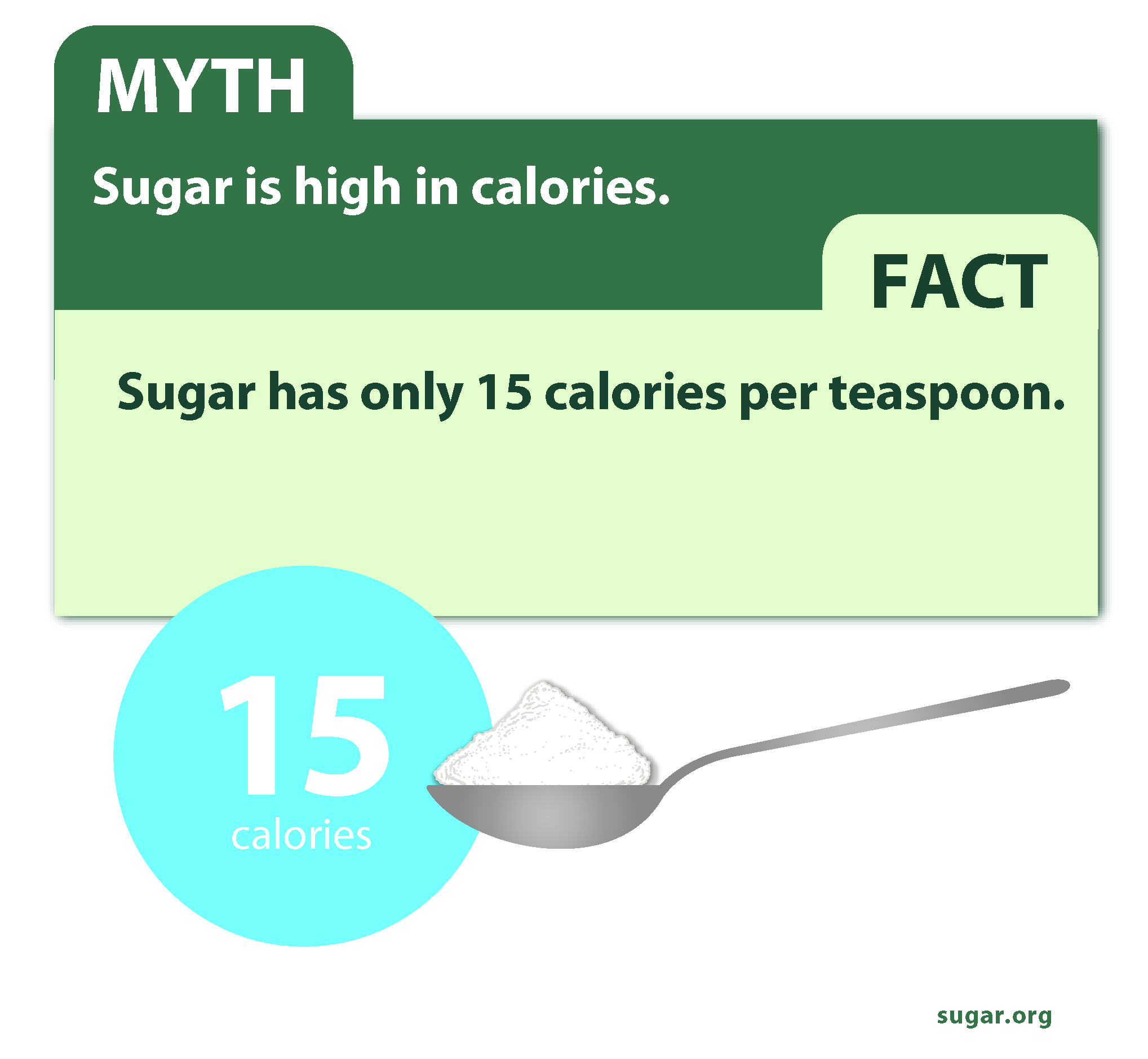There are many things said about sugar and, unfortunately, it seems that very few of them are true. While this is frustrating, collectively we can insert facts into the conversation and change the dialogue, even if it takes one conversation at a time. We’ve listed below some of the most common myths about sugar that we hear at the Sugar Association and have provided some facts to address them, so you can be ready to respond.
Myth: Americans consume more added sugars now than ever before.
Fact: USDA data show that added sugars intake decreased by 30 percent from 2000 to 2016.
In 2015016, added sugars consumption was reported to be 12.6 percent of total calories, or around 260 calories per day. Current intakes are only slightly above (about 60 calories) the 2015-20 Dietary Guidelines for Americans recommendation of 10 percecnt of calories from added sugars per day.
Myth: Sugar is addictive.
Fact: The only thing scientific literature definitively tells us is that sugar tastes good and people like eating food that tastes good.
Eating something you enjoy increases dopamine in the same way all pleasurable experiences do, but addiction and pleasure are not the same thing. Scientific evidence does not support the idea that sugar (or any other foodstuff) can be addictive.
Myth: White sugar is bleached.
Fact: Sugar is naturally white.
The same pure sugar found in the plant is what ends up in your pantry. The sugar juice extracted from the sugarbeet or sugarcane plants is filtered to remove the non-sugar plant materials like soil and plant fibers, and then the juice is crystallized. The crystals go through a few cycles of washing and spinning in a centrifuge to remove the naturally present brown molasses, resulting in white sugar.
 Myth: “Reduced sugar” always means reduced calories.
Myth: “Reduced sugar” always means reduced calories.
Fact: Sugar’s replacement replaces those calories.
When sugar is removed from a food, there are new ingredients (usually more than one) that need to take its place to replace both the flavor and functionality of sugar. These ingredients often bring the same or even more calories to a product than sugar does. So, before you think less sugar means fewer calories, compare product labels to see what the entire nutrient package of a product is.
Myth: Sugar is highly processed.
Fact: Sugar is a minimally processed food; you could even extract sugar at home.
Sugar is simply removed from the plant, washed, crystallized, spun and dried. The same sugar found naturally in the plant is what ends up in your pantry. Whether sugar comes from sugarbeets or sugarcane, the purification process is similar for each plant, and the result is the same pure sucrose.
Myth: Sugar is hidden in food.
Fact: For the past three decades, sugar has been found on the ingredient list of many foods and beverages.
Now, the amount of all added sugars in products can be found on the nutrition facts label. Sugar is added to foods for good reason. Unless you cook a lot from scratch often, you may not be familiar with all of the functional roles that sugar plays in so many products. Sugar is so much more than the sweet taste we know so well.
Myth: “Raw” sugar is healthier than table sugar.
Fact: Your body handles sugar the same, regardless of what color it is.
Raw sugars, brown sugars and any white sugars are all processed by the body in the same way. Darker-colored sugars are due to varied, yet small, amounts of molasses left on the sugar crystals. The nutrients that are contained in this amount of molasses are so small that they offer no real nutritional value.
Myth: Sugar causes chronic diseases such as obesity, diabetes and heart disease.
Fact: Excess calories from all food and beverages, including sugars, can lead to weight gain.
This of course increases the risk of obesity and other chronic diseases; however, research does not indicate that there is a direct link between sugar intake and any of these conditions.
Myth: Sugar is a high-glycemic food.
Fact: Sugar has a moderate impact on blood glucose, similar to that of wheat bread.
Glycemic index (GI) is a measure of how quickly the starches and sugars in a food or beverage are broken down to glucose and released into the bloodstream after a food or beverage is consumed. The GI of sugar is 65, falling in the “moderate” GI range of 59 to 69. Simply put, sugar ranks somewhere in the middle of carbohydrate foods when it comes to raising blood glucose.
Myth: Sugar is toxic.
Fact: There is no mystery as to what sugar is.
Sugar is an abundant carbohydrate produced by plants and made up of units of glucose and fructose. Glucose is found in all plant foods, and fructose is most abundantly found in fruits. While too much of anything can have consequences, sugar (sucrose), whether intact in fruits and vegetables or in its popular extracted and crystallized form, has been safely incorporated in the diets of humans throughout all of time. Sugar is a sweet energy source that is safe, especially when enjoyed in moderation and as part of an overall balanced lifestyle.
We know that consumers are the recipients of misinformation around sugar. For example, 72 percent of consumers believe that we consume twice as much sugar as we did a decade ago when, in fact, added sugars consumption has been on a downward trend for 20 years. Consistently pointing consumers to accurate information will hopefully shift the narrative to be more fact-based.
As the scientific voice of the industry, the Sugar Association aims to put the science and facts into conversations around sugar. You can find a printable version of myths and facts along with other educational materials on our website, www.sugar.org.